
Tea for breakfast
Whether you are looking for a tea to pair with croissants or you want to know what to eat with english breakfast tea - we have got the perfect pairing for your breakfast.
Discover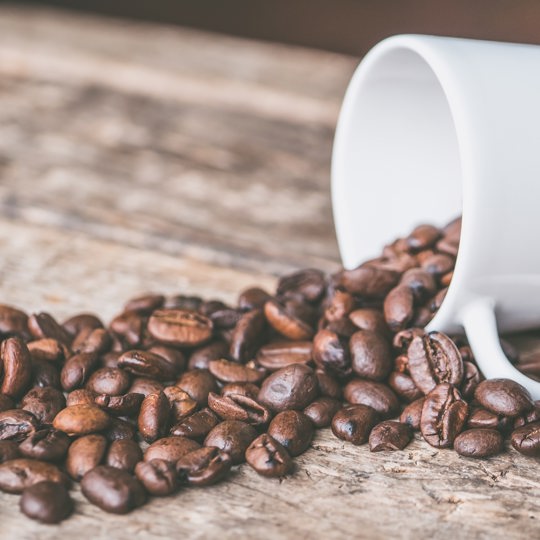
Arabica coffee beans are the most widely consumed and highly regarded species of coffee bean. They’re known for their exquisite flavour profile while is both delicate and nuanced with other hints of flavours such as floral, fruity and sometimes wine-like notes.
The flavour of Arabica beans depends largely on their growing conditions and they are primarily grown in countries such as Colombia, Brazil, Ethiopia, Costa Rica and Kenya. These regions provide the ideal environment in terms of altitude, climate, and soil for prime Arabica cultivation.
Historically, Arabica coffee is believed to have originated in the highlands of Ethiopia, where it spread to the Arabian Peninsula and gained popularity. The Arabica bean eventually made its way to Europe and is now the most commercially significant coffee species, accounting for about 60-70% of global coffee production.
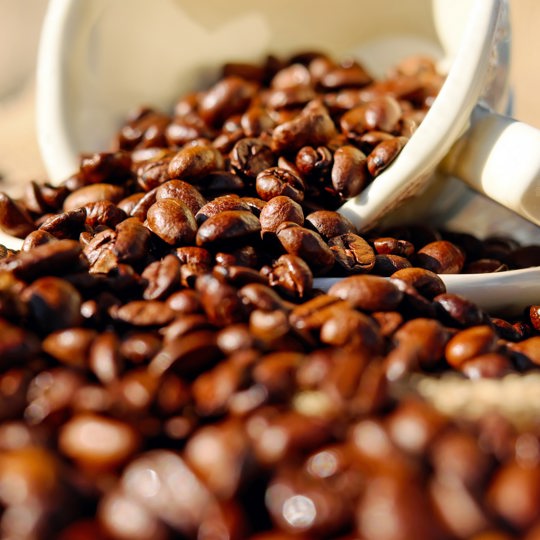
Robusta coffee beans are the second most commonly produced type of coffee beans and are known for their affordability in the commercial coffee market. Robusta beans are popular in espresso blends where they contribute to the crema formation and provide a stronger kick of caffeine.
In terms of flavour, Robusta beans have a stronger and more bitter taste compared to the Arabica bean. They often exhibit earthy, woody, and sometimes even a slightly nutty flavour and are generally considered to have a less complex flavour profile compared to the Arabica. Not only this, but they also tend to have a more pungent scent when cooked.
Known for their popularity and affordability, Robusta beans are often used in espresso blends and instant coffee production.
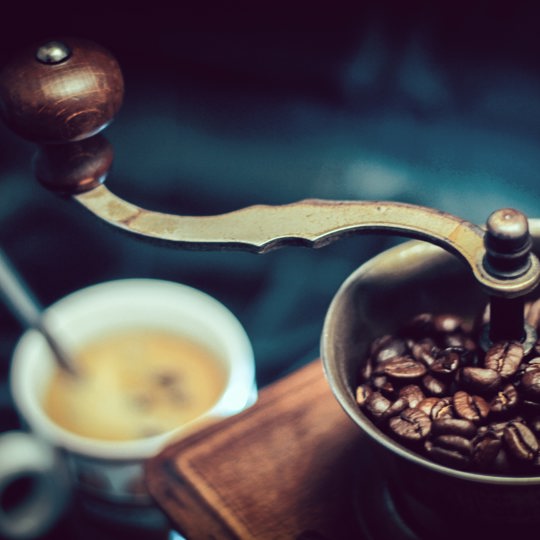
Excelsa coffee beans are a less common and lesser-known species of coffee. This type of coffee has an incredibly unique flavour profile that ranges from tart and fruity to a dark and smoky flavour, with some coffee enthusiasts often describing this bean as having a distinctively ‘wild’ taste and an almost spicy aroma.
Excelsa plants are typically grown in Southeast Asia, particularly in regions such as the Philippines and Malaysia. This type of bean is closely related to the Liberica coffee and was once considered a variety of Liberica. However, it was later reclassified as a separate species. Additionally, Excelsa beans are not as widely consumed as Arabica and Robusta, but they are often used in blends to add complexity and uniqueness to the flavour profile.
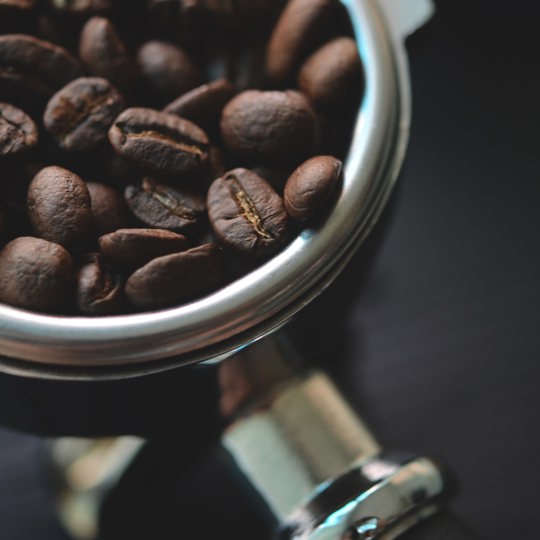
Liberica coffee beans are the least common and least commercially significant species. Their flavour profile is characterised by smoky, woody and sometimes floral notes with a delicious, full-bodied taste and a strong, powerful aroma.
Liberica plants are primarily grown across the Philippines, Malaysia, and parts of West Africa. Having originated in West Africa, the Liberica bean was later introduced to Southeast Asia and was then widely cultivated. The production declined due to the spread of coffee diseases and the growing popularity of the Arabica and Robusta beans.
As a result, Liberica beans are relatively rare and are mostly consumed locally in the regions where they are grown. They have niche appeal and are sometimes sought after by coffee enthusiasts looking for unique and exotic flavours, but are largely lesser-known.
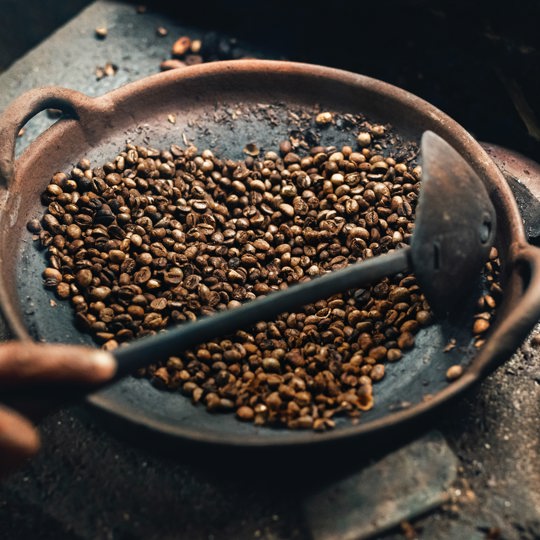
Globally, there are a few primary coffee regions that grow the most coffee: The Middle East, Central and South America, Africa and Southeast Asia. These regions are regarded as ‘The Bean Belt’ and their tropical and subtropical climates, the abundance of growing regions, and the altitude provides the ideal growing conditions for coffee beans.
The majority of coffees on the global market are grown in approximately the 10 hectares of farms in the main coffee growin regions within ‘The Bean Belt’. Despite growing in a similar latitudinal perimeter, coffees grown in these regions have vastly different and incredibly distinct flavour profiles specific to their region.
These unique flavour profiles are a result of soil chemistry, sunshine, rainfall, weather, altitude and processing methods; which led to the coined phrase: “flavour is geography”.
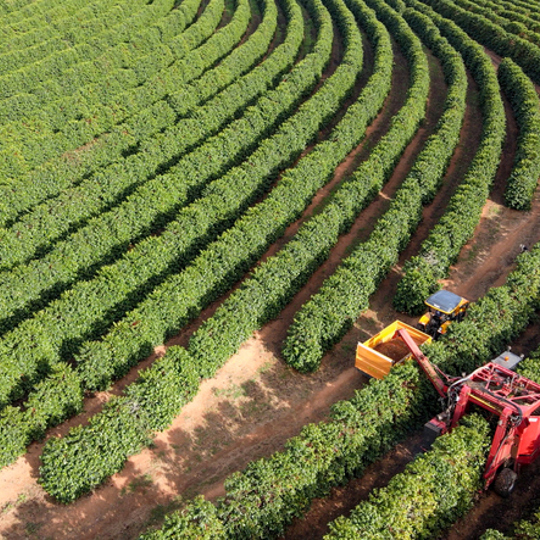
Central America sits at the top of The Bean Belt, with most of the coffee in this region coming from Guatamala, Nicaragua and Honduras. Central American coffee beans as a whole are considered incredibly well-balanced,medium-bodied and mild.
The South American region coffees are considered one of the most talked about and popular coffees available. However, it is in fact Brazil that produces the most coffee in the world, which has been apparent for the last 150 years.
South American coffee is often mild-bodied, slightly creamier and provides a cleaner cup with a slightly cholocaltely aftertaste.
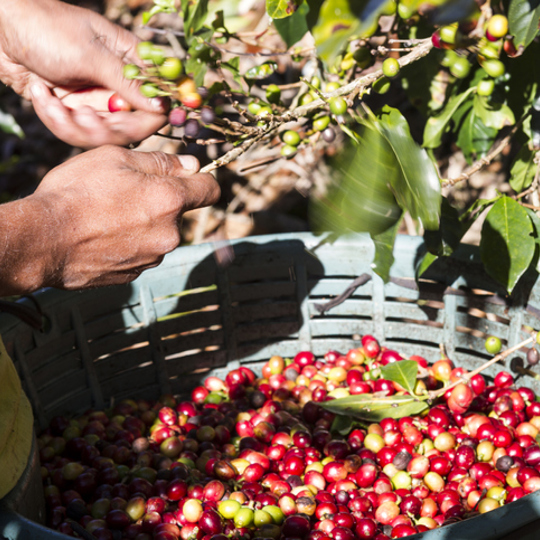
The African coffee region includes a variety of countries, including Kenya, Ethiopia, and Tanzania. This region produces coffee renwoned for its unique and complex taste with a sweet, fruity and delicate floral aroma.
The most significant contributors to African coffee comes from Kenya on the slopes of Mount Kenya, with Ethiopia also a main contributor, accounting for around 3% of the world coffee market.
Ethiopian coffee is mainly picked from trees in the central regions of Sidamo, Harer and Kaffa, producing Arabica bean varieties. Longberry is the largest bean and is considered superior in quality and flavour.
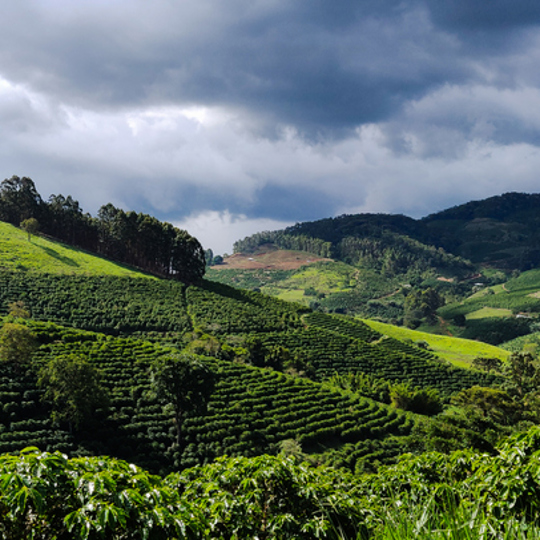
Since the late seventeenth century, coffee has been grown and consumed in Southeast Asia. The Indonesian islands of Sulawesi, Java and Sumatra are renowned for producing distinct, full-bodied, rich and earthy beans that are found commonly in blends. The beans produced on these islands tend to have clean, smooth characteristics with a juicy, fruit like taste and a nutty aroma.
Vietnam is the world’s second largest coffee exporter, producing mild, delicate-flavoured and medium-bodies beans. Several varieties of coffee are grown in Vietnam micro-climates, including the favoured Robusta and Arabica beans.
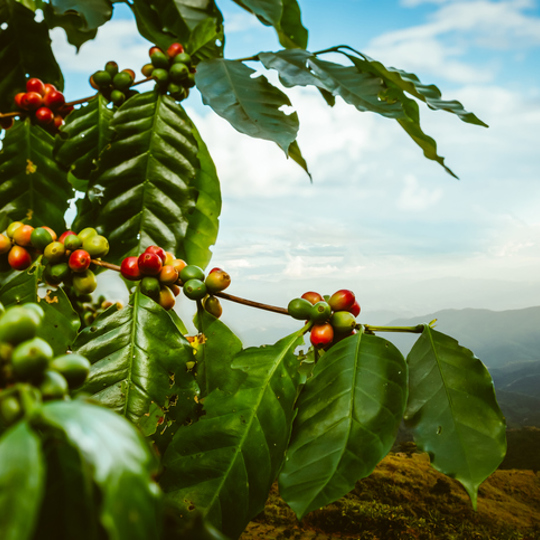
Each coffee bean has slightly different growing requirements, which contributes to the overall flavour profile, complexity and uniqueness of the bean. However, below are some general coffee been growing conditions that are required to produce great coffee.
Coffee plants thrive in tropical and subtropical climates where temperatures reach between 15°C and 24°C. However, different coffee species have varying temperature preferences. For example, Arabica prefers cooler temperatures (around 18°C), while Robusta can tolerate higher temperatures (up to 30°C).
A higher climate is also beneficial, as coffee plants are highly sensitive to frost and cannot tolerate freezing temperatures, which can severely damage or kill the plants.
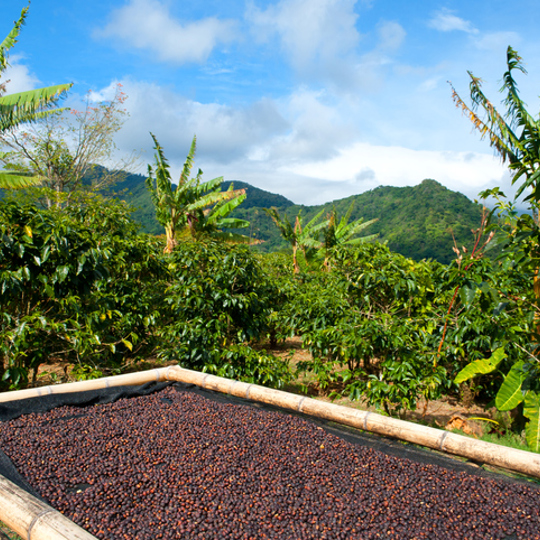
Altitude plays a crucial role in coffee cultivation, particularly for the Arabica bean. Higher altitudes (above 2,000 feet) provide cooler temperatures, more significant temperature fluctuations, and increased acidity in the beans. These conditions help to create desirable flavors and characteristics of high-quality Arabica coffee. Contrastingly, Robusta beans can be grown at lower altitudes, typically below 2,000 feet.
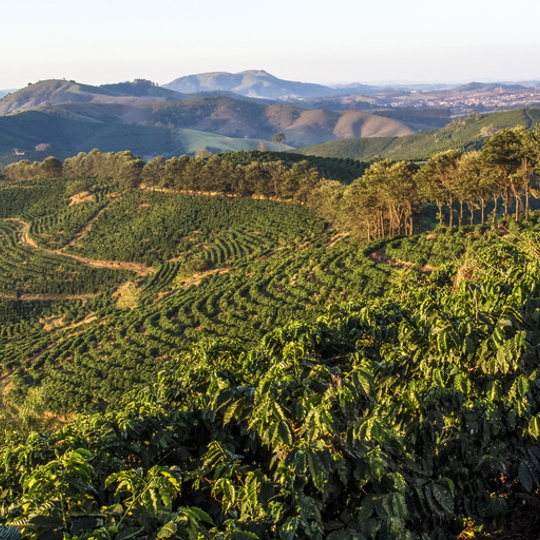
Coffee plants require a well-distributed and consistent rainfall pattern. The ideal rainfall range for coffee cultivation is around 60-100 inches per year. However, coffee plants also require a dry period for flower and cherry development. A distinct wet and dry season is favorable as it helps regulate plant growth and allows for the appropriate flowering and fruiting cycles for a well-rounded and carefully produced bean.
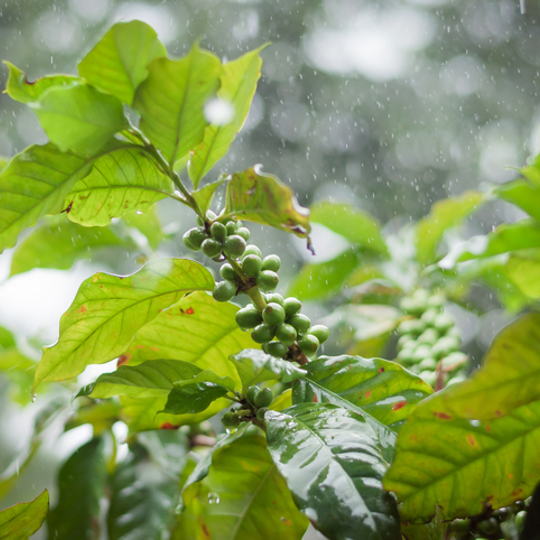
Coffee plants require enough sunlight to grow and produce cherries but also benefit from the protection and moderation of temperature provided by shade trees. This balance is particularly important in regions with higher temperatures.
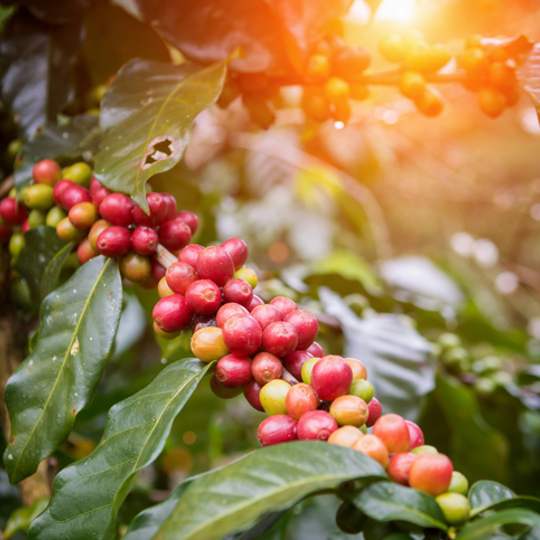
Soil chemsiotry is incredibly important to a flavourful coffee. Coffee plants thrive in well-drained, fertile soil with a good water retention capacity. The soil should be rich in organic matter and have a slightly acidic to neutral pH (around 6.0 to 6.5). Different species of bean have varying soil preferences. For example, Arabica prefers soils with higher acidity, while Robusta is more adaptable to a broader range of soil conditions.
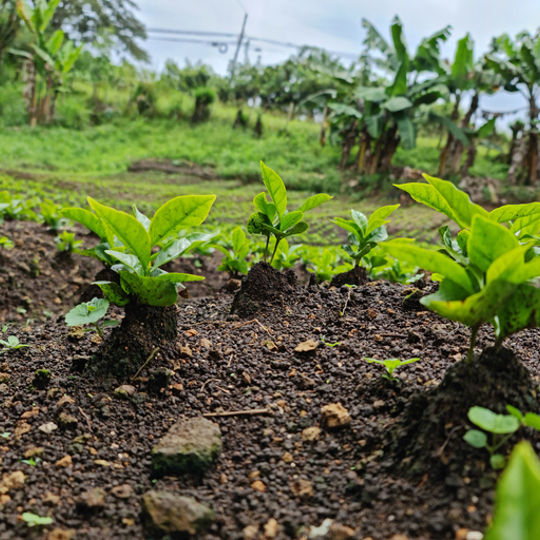
Colombia
In Colombia, coffee is often grown in small farms located in the Andean mountains, typically under shaded trees. This provides protection from intense sunlight, helping to maintain the flavour of the beans. Colombia is also known for its meticulous attention to the coffee-growing process, which includes hand-picking ripe cherries and employing traditional wet processing methods.
Brazil
As mentioned above, Brazil is the world's largest coffee produce, with vast plantations, extensive mechanisation and advanced processing techniques. Due to Brazil's size and diverse microclimates, coffee is grown in various regions and primarily cultivates Arabica beans. However, Brazil also produces a significant amount of Robusta.
Ethiopia
Ethiopia is widely recognised as the birthplace of coffee with lots of traditional coffee farming methods still prevalent. Ethiopia has diverse coffee growing regions, such as Sidamo, Yirgacheffe, and Harrar, each producing unique flavor profiles for their beans. Coffee ceremonies and the cultural significance of coffee play a central role in Ethiopian coffee production.
Vietnam
Vietnam is a major producer of the Robusta coffee bean. The country's coffee cultivation is often characterised by large-scale plantations with sun-drying methods and mechanical harvesting. Vietnam has favorable climatic conditions for Robusta, including lower altitudes and higher temperature.
Coffee beans are typically harvested by hand or through mechanised methods. The timing of the harvest varies depending on the region, coffee species, and desired flavor profile. Below is some examples of the different coffee harvesting methods.
Handpicking is the most common method for harvesting high-quality coffee beans, especially for the Arabica bean. Skilled workers instinctively know the best beans and selectively pick only the ripe cherries from the coffee trees.
This method involves multiple passes through the coffee farm over several weeks or sometimes months. Skilled pickers visually inspect each coffee tree, selecting only the ripe cherries and leaving unripe ones for picking at a later date. This meticulous approach ensures that only the highest quality cherries are harvested whe they’re ready.
An alternative to selective picking is strip picking. Here, all the cherries, regardless of their ripeness, are stripped off the tree in one go. Strip picking is a more efficient way of picking, but it can result in a mix of ripe and unripe cherries, affecting the overall quality of the coffee harvest.
Mechanical harvesting involves the use of machines that mechanically strip or shake the coffee trees to remove the ripe cherries. This method is primarily used for large-scale coffee production and is more common for Robusta coffee.
These machines mechanically strip the cherries from the branches. While they are efficient, they may collect a mix of ripe and unripe cherries, affecting the overall quality and flavour of the harvest.
These machines shake the coffee tree, causing the cherries to fall onto a tarp or conveyor belt. Shake and catch machines are highly effective and are designed to separate and collect only the ripe cherries, increasing efficiency and quality.
Coffee cherries ripen at different rates, and the timing of the harvest is crucial for flavor development, so coffee pickers must be knowledgeable and efficient in harvesting.
Ideally, coffee cherries are harvested when they reach their peak ripeness. For most coffee species, this occurs when the cherries transition from green to a vibrant red, green, yellow or other color, depending on the variety.
Ripe cherries tend to have higher sugar content, contributing to desirable flavors in the beans.
In some regions, coffee farmers intentionally leave cherries on the tree beyond the peak ripeness to allow them to become overripe because they exhibit unique flavors and characteristics. This is a less common method and often used for specialty or experimental coffees.
Ethiopia
In Ethiopia, coffee is more commonly grown on smallholder farms. On smaller farms, handpicking is the primary method of collecting coffee and elective picking is practiced to ensure only ripe cherries are harvested for the perfect blend.
Brazil
Due to large-scale coffee production in Brazil, both handpicking and mechanised harvesting methods are used. Mechanical strip harvesting is more common for Robusta beans. However, for specialty Arabica coffee, selective handpicking is still widely practiced.
Colombia
Colombia is known for its meticulous handpicking process. Skilled pickers selectively harvest ripe cherries, contributing to the country's reputation for high-quality Arabica coffee.
Vietnam
Vietnam is one of the major producers of Robusta coffee and therefore favour mechanical harvesting methods. Strip picking machines are the favourite method to harvest the coffee cherries.
Coffee beans undergo roasting to activate their incredible flavours. Roasting is a crucial step in the coffee production process that transforms green coffee beans into the aromatic and flavorful beans used to brew coffee. There are various roasting methods and techniques employed for different kinds of coffee beans to achieve different roast profiles, such as a light roast, dark roast, etc.
Light roast, also referred to as cinnamon roast or New England roast, involves roasting the beans to a light brown colour.
Light roast coffee is roasted for a shorter duration at lower temperatures (around 180-205°C). The beans retain more of their original characteristics, with pronounced acidity, higher caffeine content, and floral or fruity flavours and have a lighter body and a clean, crisp taste.
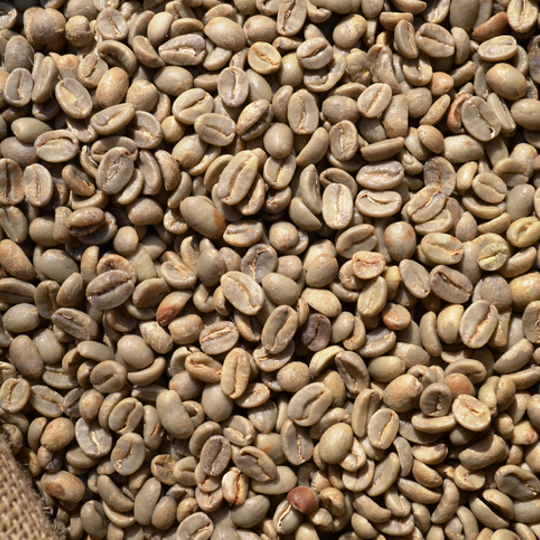
Medium roast, also known as American roast or regular roast, is a balance between light and dark roasts.
Medium roast coffee is roasted for a slightly longer duration and at slightly higher temperatures (210-220°C). This roast level retains some acidity and origin characteristics while developing more balanced flavors, medium body, and a slightly sweeter taste.
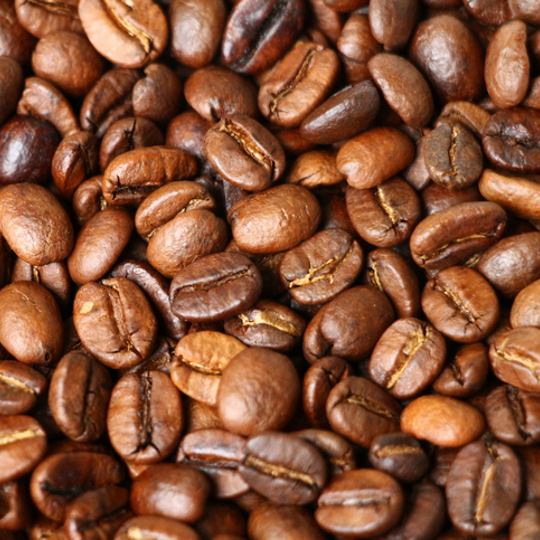
Dark roast, also known as French roast or Italian roast, involves a slightly longer roasting process, resulting in darker and more robust flavours.
Dark roast coffee is roasted at higher temperatures (around 240-250°C) for an extended period. The beans have a dark brown or almost black color, and the original flavours of the beans are transformed. Dark roast coffee typically exhibits lower acidity, fuller body, and bolder flavors with notes of chocolate, caramel, and signature smokiness.
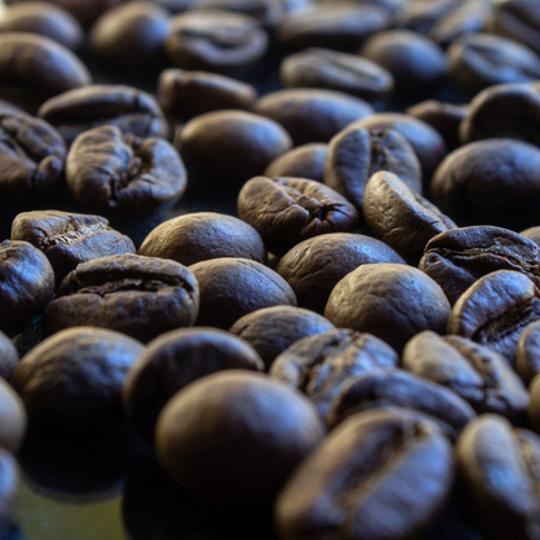
Besides the traditional roast levels, there are speciality roasts that cater to specific preferences and desired flavor profiles.
City Roast: Slightly darker than light roast but lighter than medium roast, a city roast aims to enhance the beans' flavors without overpowering them.
Full City Roast: A darker medium roast, creating bolder flavors while maintaining some origin characteristics.
Vienna Roast: A darker roast level just before the onset of oil on the bean's surface. A Vienna Roast emphasises dark chocolate and rich caramel flavors.
Italian Roast: A very dark roast where the oils on the surface become more pronounced, resulting in intense, smoky flavors.

Roasting Process:
Regardless of the roast level, the roasting process involves several key stages:
Drying: The green coffee beans are heated to remove excess moisture content.
Yellowing: The beans turn yellow as they heat up, and sugars begin to caramelise.
First Crack: The beans expand and crack, releasing steam and creating an audible "cracking" sound. This marks the beginning of the coffee development process.
Roast Development: The beans undergo further chemical reactions, with sugars caramelising and oils emerging on the surface.
Second Crack: Darker roasts may experience a second crack, which indicates a more prolonged roasting process.
Cooling: The roasted beans are rapidly cooled to halt the roasting process and preserve the desired flavours.
The processing methods of Coffee beans play a significant role in determining the flavor and characteristics of the final cup of coffee. There are three primary processing methods: the washed (wet) process, the natural (dry) process, and the semi-washed (pulped natural/honey) process. Each method involves specific steps to remove the fruit pulp and prepare the beans for drying and storage. Below we’ve detailed the processing methods used:
The washed process is widely used for producing high-quality Arabica coffee beans with bright acidity and clean flavors.
Harvesting: Ripe coffee cherries are selectively handpicked to ensure only the best cherries are collected.
Depulping: The harvested cherries are passed through a machine that removes the outer skin (exocarp) and most of the fruit pulp, exposing the coffee beans within.
Fermentation: The depulped beans are fermented in water tanks or fermentation tanks for a specific duration (typically 12-48 hours). During fermentation, naturally occurring enzymes break down the remaining fruit pulp.
Washing: After fermentation, the beans are thoroughly washed to remove any remaining mucilage.
Drying: The washed beans are spread out on raised beds or patios to dry under the sun, or mechanical dryers are used. They are periodically turned and sorted to ensure even drying and prevent mold or fermentation.
Resting and Storage: The dried coffee beans are rested and stored in a controlled environment to allow for a controlled moisture stabilisation and flavor development before they are milled and prepared for exportation.
The natural process is widely used for Robusta and some specialty Arabica coffees. This process involves drying the coffee cherries intact, allowing the fruit to dry and ferment around the beans, creating deliciously unique flavors.
Harvesting: Ripe cherries are carefully handpicked in the harvesting process to ensure only the best cherries are picked.
Drying: Instead of depulping, the entire cherry is dried intact, spread out on raised beds or patios and dried under the sun. They are regularly turned and sorted to ensure even drying and prevent rotting.
Fermentation: As the cherries dry, they undergo fermentation within the fruit itself. This fermentation process adds complexity and fruity flavors to the beans.
Hulling: Once the cherries are sufficiently dried, they are mechanically hulled to remove the dried fruit and parchment layer, revealing the green coffee beans.
Sorting and Storage: The dried beans are sorted to remove defects and foreign matter. They are then stored in appropriate conditions until they are milled and prepared for export.
The semi-washed process is a hybrid method that combines aspects of the washed and natural processes, resulting in more unique flavor profiles. The process includes:
Depulping: Similar to the washed process, the cherries are depulped to remove the outer skin and some of the fruit pulp.
Mucilage Retention: Unlike the washed process, the mucilage is intentionally left on the beans to dry during the following stages.
Drying: The depulped beans with retained mucilage are spread out to dry on raised beds or patios. The mucilage undergoes partial fermentation during drying, adding sweetness and complexity to the beans.
Hulling and Sorting: After drying, the beans are hulled to remove the dried fruit and parchment layer. They are then sorted and prepared for storage and export.
Grading coffee beans is an essential process that involves evaluating their quality and attributes based on specific criteria. The grading methods and systems can vary across different regions and countries, reflecting the unique preferences and standards of each nation and the diversity of coffee production.
This method classifies coffee beans based on their size. To measure coffee beans, the beans are passed through perforated screens with different mesh sizes. Larger beans are generally considered to be of higher quality and cann therefore be sold for a higher price.
Density grading separates coffee beans based on their weight and density. This process involves submerging the beans in water where the denser beans will sink, while the lower-density beans float. Lower-density beans are generally considered lower quality.
Defect grading involves identifying and noting the defects in the coffee beans. Beans can have physical defects such as insect damage, black beans, broken beans, or other impurities. The presence and severity of defects affect the overall quality and value of the coffee.
Cupping is a sensory evaluation method that assess the taste, aroma, and overall quality of coffee. Trained professionals (called cuppers) evaluate factors such as acidity, body, flavor notes, and aftertaste to deliver a grade. Coffee is cupped using standardised protocols, and scores or descriptors are assigned based on the cupping results.
Coffee grading can be a little bit confusing, with different regions abiding by their own personal coffee grading standards.
Colombian Coffee Grading: The Colombian grading system categorises beans into different categories based on size, with the largest beans classified as "Supremo" and the slightly smaller ones as "Excelso." Each category further undergoes sub-grading based on density and defects.
Specialty Coffee Association (SCA) Grading: The SCA is an international organisation and they have developed a standardised grading system widely used in specialty coffee. This system assigns scores based on cupping evaluations, ranging from 80 to 100 points. Coffees scoring 80 or above are considered specialty grade, reflecting their exceptional quality. Anything below is not considered a specialty coffee.
The SCA protocols and best practices can be found here.
Brazilian Coffee Grading: Brazil employs a grading system based on a combination of size and defects where the beans are classified into various categories, such as "Strictly Soft”, which is the highest grade, "Soft," and "Riada,", the worst. These grades are given depending on size and quality attributes. Brazil also uses a numbering system, where higher numbers indicate larger beans.
Kenyan Coffee Grading: Kenya uses a grading system based on size, shape, and density of the coffee beans. The highest quality Kenyan beans are classified as AA, followed by AB, PB (Peaberry), and C. The grading considers the size, shape, and lack of defects to determine the grading.
Ethiopian Coffee Grading: Ethiopia is considered the birthplace of coffee and has a unique grading system. While there is no standardised grading system across the country, Ethiopia often categorises coffees based on their growing regions and assigns them titles such as Sidamo, Yirgacheffe, Harrar, and Limu. These regional designations indicate the specific flavour profiles and characteristics associated with those areas.
Central American Coffee Grading: Countries like Costa Rica, Guatemala, Honduras, and Nicaragua typically follow a grading system that emphasizes bean size, with designations such as SHB (Strictly Hard Bean), HB (Hard Bean), and SHG (Strictly High Grown) indicating higher quality based on altitude and density.
Coffee bean farming can have a significant impact on the environment and the livelihoods of the farmers involved. To combat this, sustainable coffee bean farming practices aim to mitigate these impacts by promoting environmentally friendly cultivation methods, fair trade practices, and organic production. These will be discussed in more detail below.
Fairtrade certification ensures that coffee farmers receive fair prices for their products, which allows them to invest in their communities and improve their living conditions. Fairtrade organisations work to address social and economic inequalities in the coffee industry by advocating for better wages, safe working conditions and fair trade practices. When consumers choose Fairtrade coffee, they contribute to sustainable livelihoods for farmers and workers in coffee-producing regions.

Organic coffee farming focuses on cultivating coffee beans without the use of synthetic pesticides, herbicides, or fertilisers. Instead, organic farmers rely on natural methods like composting, crop rotation, and biological pest control to maintain soil fertility and combat pests. Organic coffee production helps preserve biodiversity, prevents soil degradation, and protects the health of farmers, workers, and consumers by reducing exposure to harmful chemicals.
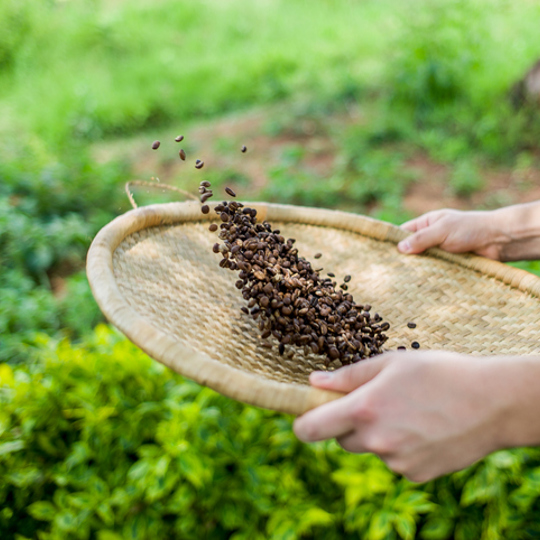
Shade-grown coffee refers to the cultivation of coffee plants under a canopy of diverse trees and plants. This traditional method provides habitat for migratory birds, preserves biodiversity and supports ecological balance. Shade-grown coffee farms often maintain a more sustainable ecosystem compared to sun-grown coffee plantations, which require deforestation and have negative impacts on wildlife.
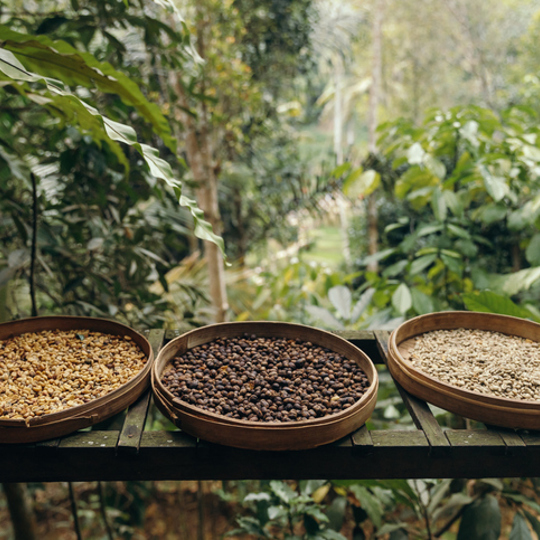
Rainforest Alliance is an organisation that certifies coffee farms based on rigorous environmental, social, and economic criteria. Certified farms must meet certain sustainability standards, including protecting ecosystems, conserving water, minimising pesticide use, and promoting staff well-being. The Rainforest Alliance seal on coffee packaging indicates that the product has been sourced from a farm that meets these criteria and therefore is committed to sustainable practices for their product.
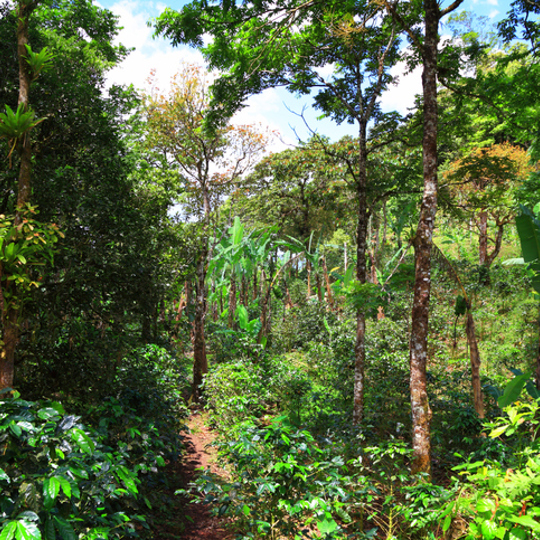
Direct trade and relationship coffee models focus on establishing long-term partnerships between coffee buyers and the coffee farmers. This approach emphasises transparency, fair pricin and sustainable practices. By bypassing intermediaries and building direct relationships, coffee farmers can receive higher prices for their beans and invest in improving their farming methods and communities.
Consider the below to source sustainable coffee beans:
Look for certifications: Choose coffee labeled with certifications such as Fairtrade, Organic, or Rainforest Alliance. These labels indicate that the coffee meets specific sustainability standards.
Research coffee brands: Explore coffee brands that advocate for sustainability and provide information about their sourcing practices, environmental initiatives, and support for their farmers.
Specialty coffee shops: Visit specialty coffee shops or local roasters that prioritise sustainable sourcing and can provide information about the origin and farming practices of their coffee beans.
Online resources: Online platforms, such as sustainable coffee directories and databases, which list brands and products that meet specific sustainability criteria are a great way to find sustainable and trustworthy products.
Sustainable coffee campaigns: Stay informed about sustainable coffee campaigns and initiatives that raise awareness about ethical and sustainable coffee practices. These campaigns often highlight specific brands or products that support sustainable farming.
By choosing sustainable coffee beans, consumers can contribute to environmental conservation, support fair trade practices, and help improve the well-being of coffee farmers and their communities.
Coffee beans are versatile and produce a wide range of flavour profiles.The flavour profiles of coffee beans can be attributed to various factors such as bean variety, roast level, and various brewing methods, which will be explored below.
Bean Variety: The type of coffee bean variety plays a significant role in determining the flavor characteristics. Two of the most common coffee bean varieties are Arabica and Robusta.
Arabica: Arabica beans are known for their nuanced and complex flavors, often exhibiting a wide range of fruity, floral, or even wine-like notes. Depending on the specific region where they are grown, Arabica beans can display flavours such as berries, citrus, stone fruits, and even subtle hints of chocolate.
Robusta: Robusta beans tend to have a stronger and more robust flavor profile. They are often though to have earthy, woody, and nutty flavors. Robusta beans often have a higher caffeine content and are commonly used in espresso blends for their rich crema and bold taste.
The degree to which coffee beans are roasted has a profound impact on the flavour profile. Different roast levels bring out distinct taste characteristics.
Light Roast: Lightly roasted beans maintain much of their natural acidity, showcasing brighter and more delicate flavours. These coffees often feature citrus, floral, and tea-like notes. Light roasts tend to better preserve the inherent characteristics of the bean origin.
Medium Roast: Medium roasted coffee bean types strike a balance between acidity and body. They exhibit flavors that are more rounded and balanced. From a medium roast you’ll discover notes of chocolate, nuts, caramel, and a slightly reduced acidity compared to light roasts.
Dark Roast: Dark roasted beans have a fuller body and bolder flavors. They may exhibit smoky, chocolaty, or even burnt sugar notes. Dark roasts often have a lower acidity level and can provide a more intense and pronounced flavor profile.
The brewing method employed can greatly influence the flavours extracted from coffee beans. Here are a few popular brewing methods and their impact on taste:
Espresso: Espresso brewing produces a concentrated and robust cup of coffee. It often showcases a rich, full-bodied profile with flavours similar to dark chocolate, caramel, and often a subtle bitter taste.
Pour-over: Pour-over brewing methods allow for precise control over water flow and extraction. This method can bring out the delicate nuances of the coffee, highlighting floral, fruity, and tea-like flavors.
French Press: The French Press method results in a fuller-bodied coffee with more pronounced oils and a slightly heavier mouthfeel. It can enhance the coffee's natural sweetness, while also retaining some of the bean's earthy and nutty undertones.
Cold Brew: Cold brewing coffee over an extended period (typically 12-24 hours) extracts the flavours more slowly, resulting in a smooth and less acidic cupof coffee. Cold brew often highlights chocolatey, caramel, and nutty notes.
Single origin coffee and coffee blends are two distinct categories within the coffee world. Put simply, a single origin coffee refers to coffee from one specific farm or producer, while a blend will combine coffee from several different locations, countries and farms.
Single origin coffee refers to coffee beans that are sourced from a specific geographic location, typically a particular country, region, or even a specific farm. Below are some key features of single origin coffee:
Flavour Profile: Single origin coffees often exhibit a unique and distinct flavor profile due to the specific growing conditions, soil composition, climate, and altitude. All of these factors contribute to the coffee's taste, aroma, acidity, body, and overall character, with many people considering single origin coffee to have a more pronounced flavour, acidity and aroma.
For example, an Ethiopian coffee might have fruity and floral notes, while a single origin Brazilian coffee might have a nutty and chocolatey flavour due to the climate, soil, growing methods, etc.
Traceability: Single origin coffees allow for greater traceability as they are sourced from a specific origin, enabling coffee enthusiasts to appreciate the uniqueness of the coffee. Consumers can often learn about the farm, the coffee varietal, and the processing methods used, enhancing the overall coffee experience and creating a more personal approach to appreciating coffee.
Seasonality: Single origin coffees are often harvested during specific times of the year, which adds to their appeal. Keen coffee lovers eagerly await the arrival of new crop seasons to sample the freshest origins.
Limited Availability: Since single origin coffee relies on specific sourcing from particular locations, its availability may be limited compared to blends. This exclusivity and limited supply can make single origin coffees more sought after and potentially more expensive.
Coffee blends are created by combining coffee beans from different origins, often from multiple countries or regions.
Consistency: Blends aim to provide a consistent flavor profile throughout the year, regardless of seasonal variations or changes in coffee availability. By blending different coffees, roasters can create a specific and unique taste that remains constant, offering a reliable experience to consumers.
Balance and Complexity: Coffee blends are carefully crafted to achieve a desired flavor profile by combining beans with complementary characteristics. The blend might consist of beans with varying acidity, body, aroma, and flavor notes, resulting in a harmonious and complex cup of coffee.
Customisation: Coffee blends allow roasters to experiment and create unique flavor profiles by mixing different origins. This versatility gives them the freedom to craft blends tailored to specific preferences or target a particular market.
Price: Blends often provide a more cost-effective option compared to single origin coffees since they can utilise a combination of lower-cost beans from different origins. This affordability makes blends more accessible to a wider range of coffee consumers.
There is so much more to a coffee’s flavour than just growing methods. The way a bean is roasted also has a huge impact on the flavour of a cup of coffee. The roasting levels of coffee ranges from light - dark roasts and these will be explored below.
Light roast coffee beans are roasted for a shorter duration, typically at lower temperatures than other roasts. They are roasted just enough to bring out the beans' natural flavours while preserving their origin characteristics. Light roasts retain more acidity and showcase brighter, vibrant, and more delicate flavours. Key flavour notes may include fruity, floral, tea-like, or citrusy profiles. The body of a light roast tends to be lighter and the caffeine content may be slightly higher compared to darker roasts. Light roasts offer a nuanced and complex cup with a crisp and refreshing character.
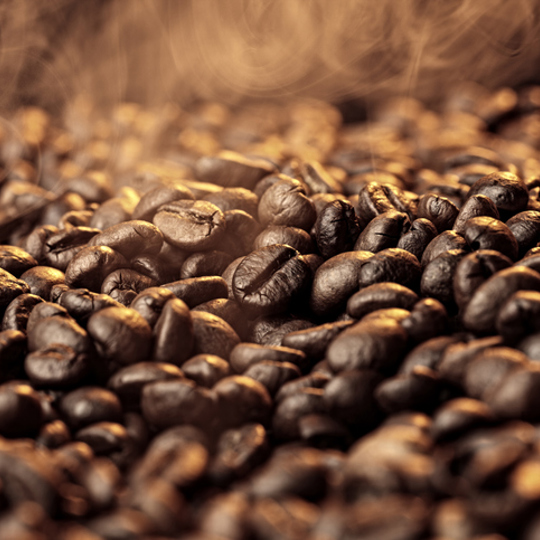
Medium roast strikes a balance between preserving the bean's origin attributes and developing richer flavors. Beans are roasted for a longer duration, allowing more caramelization of sugars and oils within the beans. Medium roasts exhibit a more rounded and balanced flavor profile compared to light roasts. They tend to have a moderate acidity level, medium body, and a pleasing sweetness. Flavor notes may include chocolate, nuts, caramel, toffee, and sometimes a hint of fruitiness. Medium roasts offer a harmonious cup with a good balance of acidity, sweetness, and body.
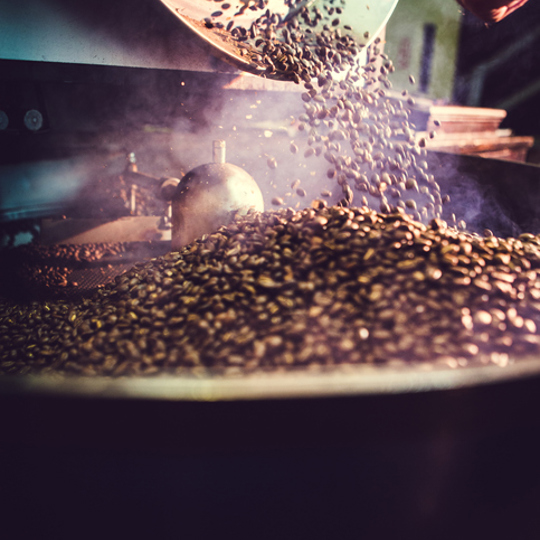
Medium-dark roasts take the beans slightly further into the roasting process, resulting in bolder flavors and a deeper caramelisation. These roasts often exhibit a more pronounced sweetness, with flavors of dark chocolate, nuts, caramel, and toasty undertones. The acidity is lower than in lighter roasts, and the body tends to be fuller. Medium-dark roasts strike a balance between the characteristics of medium roasts and the bolder flavors associated with darker roasts.
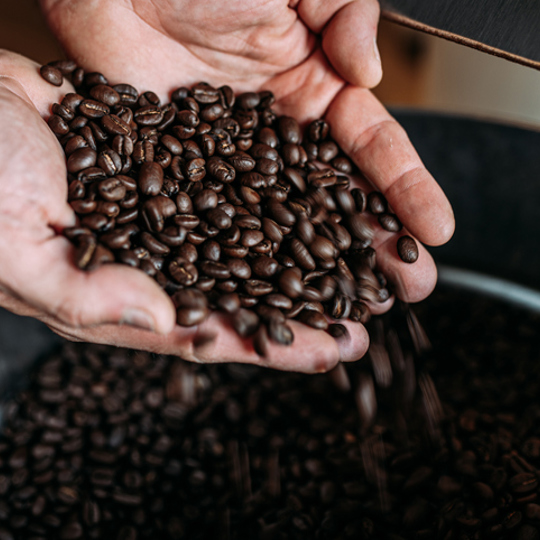
Dark roast coffee beans are roasted for a more extended period, reaching higher temperatures. The longer roasting time leads to significant caramelization and the development of rich, bold flavors. Dark roasts showcase a fuller body, low acidity, and a distinctive smoky or bittersweet flavour profile. The original bean flavors are often overpowered by the roasting process, and the taste tends to be more robust and less nuanced. Dark roasts may exhibit flavors like dark chocolate, toasted nuts, earthiness, and even hints of charred or burnt sugar. The caffeine content is slightly lower in dark roasts compared to lighter roasts.

Proper storage of coffee beans is essential to maintain their freshness and flavor over time. This can mean proper storage methods, correct containers, and air exposure. Below we’ve included some tips.
Choose the right container: Using an airtight container made of glass, ceramic, or stainless steel to store your coffee beans gives it the best chance of staying fresh for longer. Avoid plastic containers as they may retain odors and affect the coffee's taste overtime.
Use opaque containers: Coffee beans are sensitive to light, so using a container that blocks out sunlight or a tinted container helps prevent light exposure, which can degrade the quality of the beans.
Avoid air exposure: Oxygen is one of the main factors that causes coffee beans to go stale. Ensure that your container has a tight-fitting lid to minimize air exposure. Consider using containers with a one-way valve that allows carbon dioxide to escape without letting air in.
Store at a cool temperature: Heat can accelerate the staling process of coffee beans. Keep your coffee beans away from direct sunlight, stovetops, and other sources of heat. Ideally, store them in a cool and dark pantry or cabinet where they can remain fresher for longer.
Maintain consistent temperature: Fluctuating temperatures can also impact the freshness of coffee beans. Avoid storing them in areas that experience temperature variations, such as near the oven or refrigerator.
Keep away from moisture: Moisture can cause coffee beans to deteriorate and develop mold. Ensure that the storage area is dry and avoid storing coffee beans in the refrigerator or freezer as they can absorb odors and moisture.
Purchase whole beans: Buying whole coffee beans instead of pre-ground coffee is beneficial for freshness. Whole beans have a smaller surface area exposed to air, reducing the rate of oxidation. Grind just before brewing: To maximize the flavor, grind your coffee beans just before you're ready to brew. This helps preserve the aroma and prevents the loss of volatile compounds.
Use a dedicated grinder: If you have a coffee grinder, ensure it's clean and used exclusively for coffee beans. Coffee oils and residue can build up over time and affect the taste of the beans.
Avoid freezing coffee beans: Freezing coffee beans can cause moisture to condense on the beans when thawing, resulting in potential flavour loss. It's best to store coffee beans at room temperature rather than in the freezer.
A cup of coffee is an extremely personal affair where you determine exactly what flavours you like the most, and what beans, brew time, milk volume, etc make up the perfect cup of coffee for you. Everyone’s ‘right’ coffee bean will be slightly different, but we’ve included some general guidance below.
Determine your preference: Start by understanding your coffee preferences. Consider factors like flavour profile, acidity, body, and intensity. This will help you narrow down your choices based on your personal taste and match you to a bean that suits your pallet.
Roast date: Freshness is crucial for a quality cup of coffee. Look for beans with a recent roast date, preferably within the past 2-3 weeks. Coffee beans are at their peak flavour profile within a few days to 2 weeks after roasting. Avoid beans that don't mention the roast date or have a very long time since roasting as these may be dull in flavour.
Packaging: Look for beans that are stored in airtight bags with one-way valves. These valves allow carbon dioxide to escape while also preventing oxygen from entering. Oxygen exposure can lead to stale coffee, which is not ideal for a tasty cup of coffee.
Whole beans vs. ground coffee: Whole bean coffee retains its freshness longer compared to pre-ground coffee. For this reason, it’s better to purchase whole beans and grind them just before brewing for the best flavour.
Sourcing information: Seek beans that provide accurate sourcing information. Look for details like the country of origin, specific region or farm, and the altitude at which the beans are grown. Coffee beans from single-origin or specialty coffee farms are often associated with higher quality. Where you can, its best to purchase beans that are sustainably sourced, which can include certifications like Fair Trade, Rainforest Alliance, or organic.
Reputation and recommendations: Consider the reputation and recommendations of the coffee brand or roaster. Research online reviews, check for awards or certifications they've received, and ask for recommendations from coffee enthusiasts or local specialty coffee shop to ensure you’re supporting businesses that really care about the product they’re producing.
Experiment and taste: Ultimately, the best way to determine the quality of coffee beans is by tasting them. Experiment with different varieties, origins, and roast profiles to find the flavors that suit your palate. Consider purchasing small quantities initially to try different options before committing to larger quantities.
Grinding coffee beans is a crucial step in the coffee preparation process. It significantly impacts the flavor and aroma of your brewed coffee. Here's why grinding is important, the process involved, and some tips to enhance your coffee grinding experience:
Importance of Grinding Coffee Beans:
Freshness: Coffee beans contain volatile compounds that contribute to the aroma and flavor. Grinding just before brewing preserves these compounds, ensuring a fresher cup of coffee.
Extraction: The surface area of coffee grounds directly affects the extraction process. Finely ground coffee exposes more surface area, allowing water to extract flavors more quickly. Coarser grounds require longer extraction times. Consistency in grind size is crucial to achieve optimal extraction.
Flavour Control: Different brewing methods require specific grind sizes. By grinding your own coffee, you can adjust the grind to match your preferred brewing method, controlling the strength and taste of your coffee.
The Process of Grinding Coffee Beans:
Choose a grinder: There are two main types of coffee grinders: blade grinders and burr grinders. Burr grinders are generally preferred for their consistent grind size. They come in both manual and electric versions. Blade grinders are more affordable but produce less uniform results.
Select the appropriate grind size: The grind size depends on your brewing method. Coarse grinds work well for French press, medium grinds for drip coffee makers, and fine grinds for espresso. Experimentation and adjustments may be needed to find your preferred grind size.
Measure the beans: Determine the amount of coffee you need for your desired brew. It's recommended to use a scale to measure by weight for accuracy, but if you don't have one, use a coffee scoop or tablespoon as a rough guide.
Grind the beans: If using a burr grinder, adjust the grind size and set the desired consistency. For blade grinders, pulse in short bursts to achieve a relatively consistent grind. Avoid overgrinding, as it can lead to a bitter taste due to increased extraction.
Tips for Grinding Coffee Beans:
Invest in a quality grinder: A burr grinder is ideal for consistent results, but if you're using a blade grinder, try shaking it gently during grinding to achieve a more uniform grind.
Grind just before brewing: To maximize freshness, grind your beans immediately before brewing. Oxygen rapidly interacts with the coffee grounds, leading to flavor degradation.
Practice consistency: Aim for a consistent grind size. Inconsistent grinds can result in uneven extraction and an imbalanced cup of coffee.
Clean your grinder: Coffee oils can accumulate in the grinder, affecting the flavor of future brews. Regularly clean your grinder according to the manufacturer's instructions.
Adjust the grind: Fine-tune your grind size based on the flavor of your brewed coffee. If it tastes weak or watery, try a finer grind. If it tastes bitter or over-extracted, opt for a coarser grind.
Keep it cool: Heat generated during grinding can affect the coffee's flavor. If you're grinding a large amount of coffee, consider grinding in smaller batches to prevent heat buildup.
Arabica: A species of coffee plant known for producing high-quality beans with nuanced flavours and acidity. Arabica beans are typically considered superior to Robusta beans in terms of taste.
Robusta: Another species of coffee plant, Robusta beans are known for their higher caffeine content and more bitter, earthy flavor. They are often used in espresso blends to provide a strong base and crema.
Single Origin: Coffee beans sourced from a specific region or even a particular farm. Single origin beans showcase the unique flavours and characteristics of the specific area where they were grown.
Blend: A mixture of coffee beans from different regions or species. Blends are created to achieve a desired flavor profile, balance, and consistency.
Elevation: The altitude at which coffee is grown. Higher elevation often results in slower bean maturation, leading to more concentrated flavours and better acidity.
Washed process: A method of processing coffee beans where the outer fruit is removed before drying. This often leads to cleaner and more vibrant flavours in the final cup.
Natural process: Coffee beans are dried while still inside the cherry fruit. This imparts a fruity and sometimes fermented flavour profile to the coffee.
Honey process: A processing method where some of the cherry's mucilage is left on the bean during drying. This can result in a coffee with a sweet and sticky taste.
Peaberry: A mutation where only one bean develops within the coffee cherry, giving it a rounder shape. Peaberry beans are believed by some to have enhanced flavor characteristics.
Cupping: A tasting method used by coffee professionals to evaluate and compare different coffee beans. It involves slurping coffee from a spoon and evaluating its aroma, flavour, acidity, body, and aftertaste.
Acidity: A desirable quality in coffee that refers to the bright, lively, and often fruity or citrus-like flavours that can be tasted on the palate.
Body: The tactile sensation of coffee in the mouth, ranging from light to heavy. It can be described as thin, medium, or full.
Aroma: The fragrance released when coffee is brewed. It plays a crucial role in how we perceive the overall flavour.
Crema: The frothy, caramel-coloured layer that forms on top of a well-pulled espresso shot. It's a mix of oils and gases extracted from the coffee grounds.
Extraction: The process of dissolving coffee solubles from the grounds using water. Proper extraction is crucial for achieving the desired flavours without over-extraction (bitterness) or under-extraction (sourness).
Grind size: The coarseness or fineness of coffee grounds. Different brewing methods require different grind sizes for optimal extraction.
Dose: The amount of coffee used in a brewing process, often measured in grams.
Brew ratio: The ratio of coffee to water used in brewing. It impacts the strength and flavour balance of the final cup.
Espresso: A concentrated coffee brewing method where hot water is forced through finely ground coffee under high pressure, resulting in a strong and flavourful shot.
French press: A brewing method where coffee grounds steep in hot water before being separated by pressing a plunger through a mesh filter. This method produces a full-bodied cup with more sediment.
Decaffeination: The process of removing most of the caffeine from coffee beans. This can be done using various methods, such as the Swiss Water Process or solvent-based methods.
Degassing: The process by which freshly roasted coffee releases gases, primarily carbon dioxide, that build up within the beans during roasting. Coffee is often allowed to degas before being packaged or brewed for optimal flavour.
Tamping: The act of compressing coffee grounds evenly in the portafilter basket before making espresso. Proper tamping ensures consistent extraction.
Portafilter: The handle-like device on an espresso machine that holds the coffee grounds and attaches to the machine during brewing.
Doser and doserless grinder: Types of espresso grinders. A doser grinder dispenses a specific amount of ground coffee into a dosing chamber, while a doserless grinder directly dispenses the grounds into the portafilter.
Chaff: The thin, papery skin that comes off coffee beans during roasting. It is often removed or separated from the beans after roasting.
Micro lot: Coffee sourced from a very small, specific area within a farm or region. Micro lots are prized for their unique flavors and limited availability.
Macro lot: Larger quantities of coffee from a specific origin or farm. While not as limited as micro lots, they still offer distinct regional characteristics.
Green coffee: Unroasted coffee beans that have been harvested and processed but not yet roasted. They are typically green in color and have a grassy smell.
Cascara: The dried husk or skin of the coffee cherry, often used to make a tea-like beverage with fruity and floral notes.
Crema enhancer: Additives or enhancers used to improve the crema quality and texture on espresso shots.
Bloom: The initial phase of the brewing process in methods like pour-over or French press, where hot water is poured over coffee grounds to release trapped gases. This helps with even extraction.
Flat White: An espresso-based beverage similar to a latte but with a higher coffee-to-milk ratio and a velvety microfoam texture.
Ristretto: A short espresso shot made by extracting a small amount of water through a larger amount of coffee grounds. It's more concentrated and intense than a regular espresso shot.
Cascara: The dried husk or skin of the coffee cherry, often used to make a tea-like beverage with fruity and floral notes.
Direct trade: A sourcing practice where coffee roasters and farmers work directly with each other, often bypassing traditional middlemen. This can lead to more sustainable relationships and better prices for farmers.
Fermentation: The natural process during which enzymes break down the sugars in coffee cherries, affecting the flavor profile of the beans.
Varietal: A specific subspecies or cultivated variety of coffee plant, each with its own unique flavor characteristics.
Q Grading: A professional coffee tasting and grading system used to evaluate and score coffee beans for their quality and attributes.
Third wave coffee: A movement emphasising high-quality, artisanal coffee production, often focusing on traceability, transparency, and showcasing the unique flavors of different coffee origins.
You can read more about coffee bean terms here.
Decaffeinated coffee beans: Decaffeinated coffee beans undergo a process to remove most of their caffeine content while still preserving their flavour profile. This allows people to still enjoy a delicious cup of coffee without the stimulating effects of caffeine.
There are several methods used to decaffeinate coffee, such as the Swiss Water Process, carbon dioxide extraction, and solvent-based methods. Despite the decaffeination process, these beans can still retain much of their original flavour characteristics, depending on the quality of the beans and the decaffeination method used.
Peaberry: Peaberry coffee beans are a unique type of coffee bean that forms when only one seed develops within the coffee cherry, instead of the usual two flat-sided beans. Because there's only one bean, it receives more nutrients from the cherry, resulting in a distinctive and sought-after flavour. Peaberry beans are often said to be more flavourful, with a brighter acidity and smoother body compared to regular beans from the same crop. Because of their unique taste, they’re very valuable within the coffee bean industry.
Geisha: The Geisha variety originated in Ethiopia and is renowned for its exceptional floral and tea-like flavours. It often features delicate, complex aromas with distinct notes of jasmine, bergamot, or tropical fruits. Geisha beans are typically grown at high altitudes and meticulously processed to preserve their unique characteristics.
Maragogype: Maragogype beans are known for their large size and distinct flavour profile. They usually produce a mild, smooth cup with a well-rounded body. The flavor can vary depending on the region of cultivation but often includes notes of chocolate, nuts, and mild acidity.
Liberica: Liberica coffee beans have larger and more irregularly shaped beans compared to the typical coffee beans. Liberica beans often have a distinct fruity and floral aroma, with flavors that range from fruity to woody. The beans are more resistant to certain pests and diseases, which can make them a more sustainable option in some regions.
Coffee beans each have their own unique flavour profile and notes, which means they each pair slightly differently with different sweet and savoury foods. Much like wine, coffee can be harmoniously paired with certain foods for an incredibly flavourful experience.
Arabica Coffee Beans
Arabica beans are known to pair well with dishes and treats that are floral, fruity and with a bright acidity.
Complementary food Fresh fruit tarts, lemon drizzle cake, berry muffins, goat cheese salads.
Robusta Coffee Beans
Robusta beans work incredibly well with bitter chocolate and earthy, nutty foods.
Complementary food: Dark chocolate brownies, walnut pastries, mature cheddar cheese, savoury quiches, pecan pastries.
Peaberry Coffee Beans
Like the Arabica, Peaberry beans pair incredibly well with foods with notes of bright fruits, citrus, berry notes.
Complementary food: Mixed berry scones, raspberry chocolate truffles, blue cheese with fruit preserves, grilled chicken salads.
Geisha Coffee Beans
Foods that feature a floral, tea-like flavour work best with the Geisha bean. As well as tropical fruits.
Complementary food: Earl Grey tea cakes, passion fruit chocolates, brie cheese with tropical fruit, light seafood dishes.
Maragogype Coffee Beans
For the Maragogype bean, foods with nutty, chocolate and mild acidity work best.
Complementary food: Almond croissants, hazelnut chocolates, gouda cheese, roasted chicken with nut stuffing.
Liberica Coffee Beans
Fruity, floral, earthy flavours work for the Liberica bean, perfect for sweet and savoury foods.
Complementary food: Lavender shortbread cookies, fig-filled chocolates, camembert cheese, roasted vegetables with herbs.
Decaffeinated Coffee Beans
If ou want the perfect partner to a decaf coffe, nutty, chocolatey, mild flaours work best here.
Complementary food: Oat biscuits, milk chocolate truffles, mild cheddar cheese, mushroom risotto.